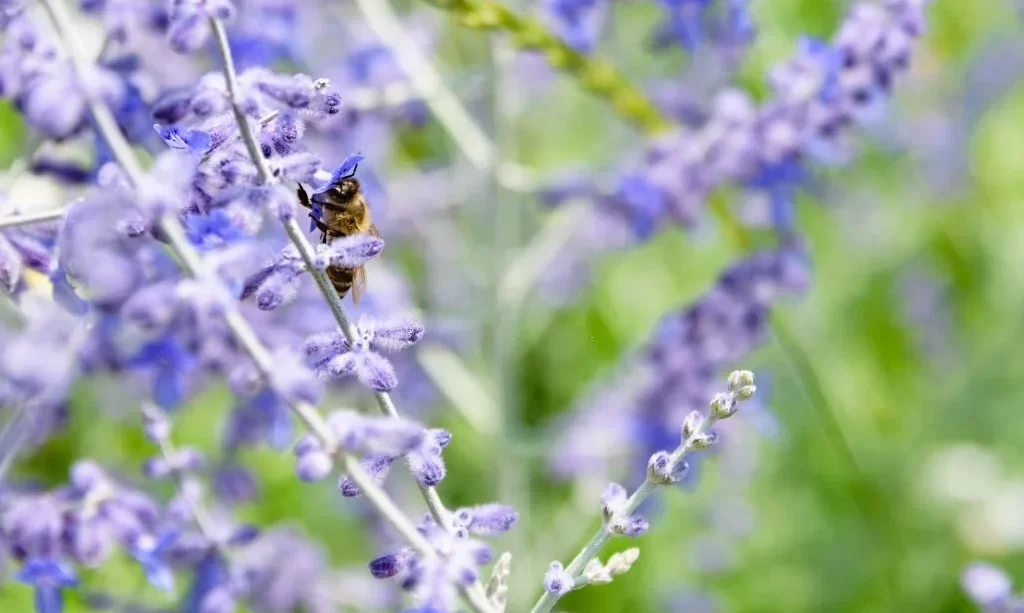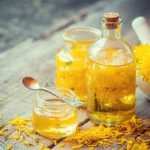Russian sage, with its elegant silvery foliage and wispy lavender-blue blooms, is a staple in many gardens, adding a touch of grace and charm to outdoor spaces. However, beyond its ornamental appeal, there’s often curiosity about whether this beautiful garden herb is more than just a visual delight. Can Russian sage be considered edible? In this article, we embark on a journey to explore the world of Russian sage, shedding light on its unique qualities and uncovering whether it can find a place in our culinary adventures. As garden enthusiasts, understanding the nature of the plants we cultivate is a step towards a deeper connection with our green companions and a greater appreciation of their potential uses.
- Perovskia Seeds (Russian Sage) – Blue Steel – 100 Seeds – Perovskia atriplicifolia
- Non-GMO – Open Pollinated – High Germination Rate
- Seeds For: Decorative & Ornamental Foliage & Flower Gardening
- Days to Full Maturity: 2nd Yr — Perennial — USDA Hardiness Zone: 5-9
- Mountain Valley Seed Company Brand – Premium Quality Seeds
What is Russian Sage?
Russian sage, scientifically known as Perovskia atriplicifolia, is a perennial herbaceous plant native to Central Asia. It boasts a distinctive appearance, featuring feathery, silvery-gray leaves and tall, slender stems adorned with delicate lavender-blue flowers. This herb is well-loved for its drought tolerance, making it a resilient addition to gardens in various climates.
Russian sage is a member of the mint family (Lamiaceae) and shares some characteristics with its aromatic relatives, such as a pleasant scent when the leaves are crushed. It’s a popular choice in landscaping for its ability to attract pollinators like bees and butterflies, adding life and color to garden landscapes.
While Russian sage is primarily cultivated for its ornamental value and its role in xeriscaping, some people have explored its potential culinary and medicinal uses. Let’s delve deeper into the question of whether Russian sage is indeed edible and what considerations should be taken into account when considering its consumption.
The Edibility of Russian Sage
Russian sage is generally not considered a common edible herb in the culinary world. Unlike many other herbs such as basil, rosemary, or thyme, it is not typically grown for its culinary uses. The primary reason for its limited use in cooking is its strong and somewhat bitter flavor, which can be overpowering if not used judiciously.
While Russian sage may not be a staple in the kitchen, there have been some historical uses and anecdotal reports of it being used sparingly in traditional herbal medicine and teas. However, these practices are relatively uncommon and not well-documented.
Before considering the use of Russian sage in any culinary applications, it’s crucial to exercise caution and ensure that the plant has not been treated with pesticides or herbicides, which can be harmful if consumed. Additionally, individuals with allergies or sensitivities should be especially careful when experimenting with this herb in their diet.
Potential Health Benefits
Russian sage has been associated with certain potential health benefits, primarily due to its historical use in herbal remedies:
- Calming Properties: Russian sage has been used in traditional herbal medicine as a calming agent. It is sometimes included in herbal teas intended to promote relaxation and reduce stress. Some people find its aromatic qualities soothing when used in this manner.
- Respiratory Health: In some cultures, Russian sage has been used to alleviate respiratory issues, such as coughs and congestion. It may be included in herbal formulations designed to support respiratory health.
It’s important to note that the potential health benefits of Russian sage are largely anecdotal, and scientific research on its medicinal properties is limited. If you are interested in using Russian sage for its potential health benefits, it is advisable to consult with a healthcare professional or herbalist who can provide guidance and ensure safe and appropriate usage.
Culinary Uses (If Applicable)
Russian sage is not a herb commonly used in mainstream culinary practices, primarily due to its strong and somewhat bitter flavor. However, some individuals have experimented with incorporating it into their dishes in a limited capacity. Here are a few culinary uses to consider:
- Herbal Infusions: Russian sage leaves can be used to infuse flavor into oils, vinegars, or syrups. This can impart a subtle herbal note to dishes like salads or desserts. However, it’s crucial to use Russian sage sparingly, as its flavor can be quite intense.
- Garnish: The striking appearance of Russian sage, with its silvery leaves and lavender-blue flowers, makes it an attractive garnish for plating dishes, particularly those with Mediterranean or herbal themes.
- Teas: Some individuals have brewed teas using Russian sage leaves for their potential calming properties. However, it’s essential to use caution and moderation when preparing such teas and consult with an herbalist or healthcare professional if you have any concerns.
Precautions and Considerations
When contemplating the use of Russian sage for culinary or medicinal purposes, several precautions and considerations should be kept in mind:
- Plant Source: Ensure that the Russian sage you use has not been treated with pesticides, herbicides, or other chemicals, as these can be harmful if ingested.
- Allergies and Sensitivities: Some individuals may have allergies or sensitivities to certain plants or herbs. If you are new to using Russian sage, start with a small amount and monitor for any adverse reactions.
- Moderation: Russian sage has a robust and somewhat bitter flavor, so it should be used sparingly in culinary applications to avoid overpowering dishes.
- Consult an Expert: If you are considering the use of Russian sage for its potential health benefits, consult with a qualified herbalist or healthcare professional to ensure safe and appropriate usage.
Conclusion
In conclusion, Russian sage is not a commonly used herb in mainstream culinary practices, primarily due to its strong flavor. While there have been historical uses and anecdotal reports of it being used in herbal remedies and teas for potential health benefits, these practices are relatively uncommon and not extensively documented.
If you are interested in exploring the culinary or medicinal uses of Russian sage, exercise caution, and be mindful of its strong flavor. Ensure that the plant has not been exposed to harmful chemicals and consult with experts or professionals who can provide guidance on safe and appropriate usage.
Ultimately, while Russian sage may have its place in certain niche applications, it is essential to approach its use with care and respect for its unique characteristics.





